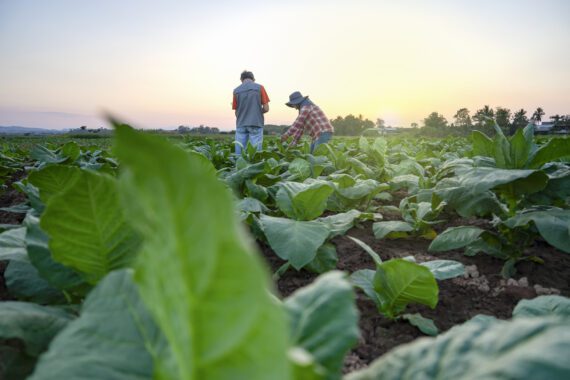By Jordan Teague
Feed the Future, the U.S. government’s flagship global food security initiative, emerged as part of the U.S. response to the major food price crisis of 2007-2008. The crisis forced tens of millions more people into hunger, making the need to focus urgently on agriculture obvious.
Bread for the World has supported Feed the Future and its goals since it began. Since 2010, Feed the Future has invested approximately $1 billion annually to help countries support their smallholder farmers and improve their agricultural sectors.
 Yet in 2022, 750,000 people in five countries are living in famine conditions. This is as if nearly the entire population of North Dakota were facing starvation. Between 2000 and 2016, the world had one declared famine, in 2011 in Somalia. The situation is very different now, with five famines and more than 20 other identified “hunger hotspots.”
Yet in 2022, 750,000 people in five countries are living in famine conditions. This is as if nearly the entire population of North Dakota were facing starvation. Between 2000 and 2016, the world had one declared famine, in 2011 in Somalia. The situation is very different now, with five famines and more than 20 other identified “hunger hotspots.”
The major causes of hunger today–armed conflict, the impacts of climate change, and the economic downturns caused by the COVID-19 pandemic—have reduced the ability of smallholder farmers around the world to earn a living and grow enough food for their families and communities.
In some countries, longer-term agricultural investments that have been made over the past decade have been overshadowed by these forces, which are beyond the control of local leaders. But this is not cause to give up on development assistance. In the past decade, Feed the Future has made important progress in strengthening agriculture so that more families have sustainable access to the food they need.
Bread for the World emphasizes that more can and must be done to respond to the hunger surges of recent years.
Smallholder farmers can benefit significantly from further investments in agriculture, food security, and nutrition. For example, the African Development Bank has a new $1 billion plan to expand wheat production in Africa. This will ultimately help to fill the shortfalls caused by the war in Ukraine. In the future, communities will be less vulnerable to outside forces they cannot control.
Given Feed the Future’s success in the areas in which it works, the U.S. government should scale up its activities and budget. Earlier this year, President Biden announced that Feed the Future was expanding to eight new countries, bringing the total to 20 countries. Yet, funding for the initiative has stagnated in recent years. The combination of heightened global needs and record-high inflation rates in many countries means that now is the time to increase funding for Feed the Future.
 The United States is a leader in providing emergency assistance to those caught in famine. Feed the Future’s longer-term approach complements emergency efforts. Globally, more than one person in three cannot afford a healthy diet.
The United States is a leader in providing emergency assistance to those caught in famine. Feed the Future’s longer-term approach complements emergency efforts. Globally, more than one person in three cannot afford a healthy diet.
Feed the Future can enable communities to build food systems that not only generate income for farmers and make sure families are fed, but also ensure that communities have access to a variety of nutritious foods. Feed the Future could build on its record of investing in nutrition by strengthening support for smallholder farmers to produce healthy, nutrient-dense foods, as well as by helping to establish efficient ways for farmers to get their produce safely to markets.
The presence of simultaneous famines is a dramatic shift in “what hunger looks like” globally. Another such shift is the growing role of climate change as a cause of hunger. Smallholder farmers in lower-income countries are increasingly vulnerable to climate impacts, which may include higher temperatures, changing precipitation patterns that result in droughts or floods, and/or more frequent extreme weather events such as hurricanes.
In response, Feed the Future should identify ways to adapt its own approaches and projects so that they continue to support farmers and improve agriculture despite today’s different, increasingly volatile conditions. One potential change is to focus both research and financing more closely on building farmers’ resilience to climate impacts.
The U.S. government created Feed the Future and took other big steps in response to the 2008 food price crisis. In 2022, our country must again lead by transforming Feed the Future to address current needs.
Jordan Teague is interim director of policy analysis and coalition building with Bread for the World.



